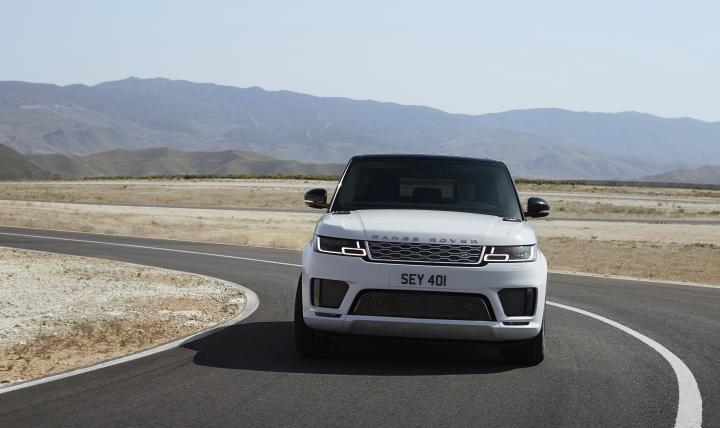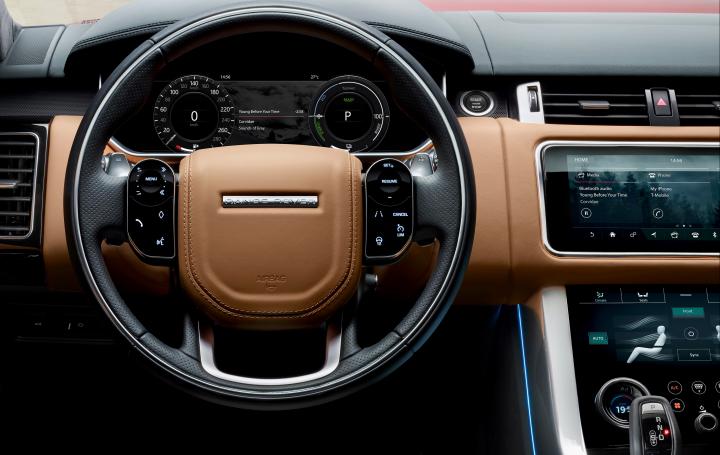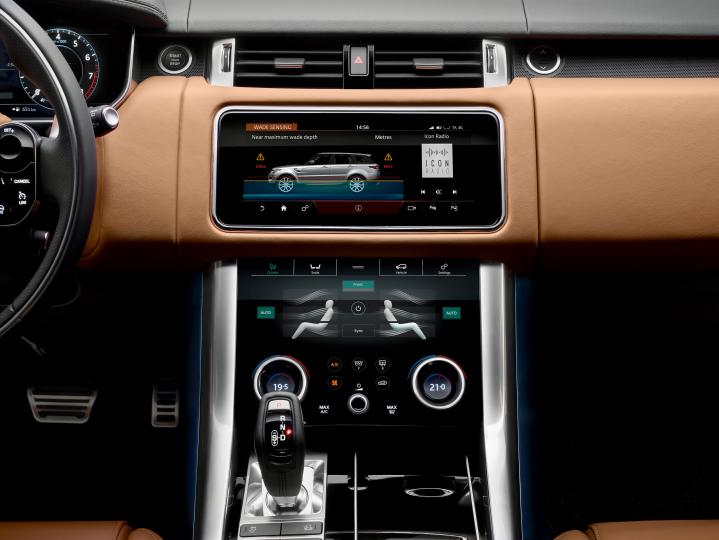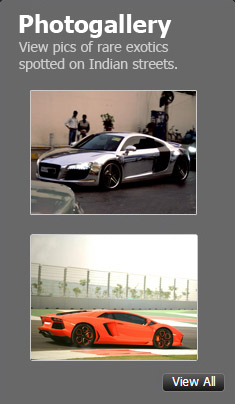News
UK: Land Rover unveils Range Rover Sport plug-in hybrid
Land Rover has unveiled their first zero emission plug-in vehicle. The updated Range Rover Sport now comes with a choice of 2.0L 4-cylinder, 3.0L V6 and 4.4L V8 diesel engines and 2.0L, 2.0L PHEV, 3.0L V6 and 5.0L V8 petrol engines. The British car maker has launched the plug-in hybrid model keeping in mind the company's 2020 electrification plan. This variant is priced at GBP 70,800 (Rs. 60.88 lakh).
The all-aluminum body is claimed to be 39% lighter than steel. Head on, the SUV gets a revised grill, a new bumper design and new LED headlights that don't blind the oncoming drivers. In the PHEV variant, the charger is located below the logo. Changes at the back are limited to a new design spoiler, that is claimed to reduce the dirt accumulation on the rear windscreen to aid visibility. It also gets a choice of three alloy wheel designs in 21 and 22-inch sizes.
Two 10-inch touchscreens are located on the minimalist dashboard. The lower touchscreen is fixed, but the upper one can be adjusted for glare. The Range Rover Sport gets 2 rotary knobs that can be used to control cabin temperature, fan speed, seat heater/cooling functions and massage function. These can also be used to access the media and phone when the upper screen is in use. The contents of both the screens can be selected as per choice. The driver also gets a fully configurable 10-inch colour head up display. It projects navigation and vehicle speed always and cruise control, driver aids etc. when in use. The rear passengers also get a 10-inch touchscreen. There are 14 power connections inside including USB, 12V, and even a regular domestic socket. Customers get a choice of 12, 18 and 22 speaker systems with the largest being a 1,700 Watt one. The roof sun blind can now be controlled using gestures - wave your hand in front of the IRVM in a rearward swipe to open it where as a forward swipe closes it.
The plug-in hybrid electric vehicle (PHEV) is powered by a combination of a 2.0-litre 4-cylinder Ingenium petrol engine making 296 BHP and a 114 BHP electric motor. The combined 398 BHP power output is routed to the four wheels via a permanent four-wheel drive system. Land Rover claims a 0-100 km/h time of 6.7 seconds and a top speed of 220 km/h. Drivers can select two modes - Parallel Hybrid mode and EV mode. In the first mode, the driver can choose either a SAVE function or the Predictive Energy Optimisation (PEO) function. The SAVE function prevents the battery charge dropping from a certain lever and the PEO function prompts the used to enter the destination in the navigation system and optimizes the use the combustion engine and the electric motor to maximize the fuel economy. The EV mode enables the vehicle to run only on the electric motor. Land Rover claims that on the electric mode, the SUV can go up to 51 km.
The electric motor is housed in the 8-speed automatic ZF transmission and is mounted in the center of the vehicle. A 13.1 kWh lithium-ion battery powers it. An on board 7kW charger is also located beside the gearbox with its plug at the font of the vehicle. The battery is located beneath the rear boot floor. A full charge is claimed in 2 hr 45 min using a 32 Amp wall changer whereas the regular 10 Amp socket will charge the battery in 7 hr 30 min.
All the variants get the four-wheel drive capability with a 50:50 torque split. A smart actuator replaces the separate motor and ECU in the transfer case, reducing its weight. An optional system with a single-speed transfer case and Torsen differential providing a 42:58 torque split is offered. Except for the SD4 variant, all others get the air suspension. This can lower the car up to 15 mm when cruising (speed > 104 km/h), lower up to 50 mm for loading and moving in height restricted spaces like parking lots. The height can also be increased to 40 mm and 75 mm for mild off-road and sever off-road or water wading respectively up to 80 km/h.
The car also gets a host of safety features and driver aids including driver, passenger, side curtain and thorax airbags, seat belts linked to emergency brakes, hill assist, advanced towing assist - that allows reversing with trailers, hill assist and pedestrian safety. It also gets High Speed Emergency Braking, Blind Spot Assist, Lane Keep Assist, Traffic Sign Recognition, Adaptive Speed Limiter, Driver Condition Monitor and Adaptive Cruise Control with Queue Assist. The Sport variant also gets a 360-degree parking camera, Parking Aid, Rear Traffic Monitor and Clear Exit Monitor that alerts rear passengers exiting to obstacles coming from rear via a light on the door.
The flagship Range Rover Sport SVR gets a power bump of 25 BHP. It is designed by JLR's Special Vehicle Operations (SVO) division. The 5.0-litre supercharged V8 petrol engine delivers 567 BHP and 700 Nm torque. It is claimed to do 0-100 km/h in 4.5 seconds and has a top speed of 282 km/h. SVO has used lightened materials like carbon fibre composites at the front, including the bonnet and air vents to reduce the overall weight. They have also used a different suspension to reduce body roll and improve the turn-in, mid-corner grip and body control. It gets visual changes like custom paint styles, SVO badge instead of the Land Rover logo, SVR badges on the grille, illuminated SVR branded scuff plates at the front and SVR logo on the headrests.
The first deliveries are expected by the end of 2017. It will be produced in the company's Solihull production facility in the UK.
The variant options are -
Diesel
2.0L SD4 - 237 BHP / 500 Nm
3.0L TDV6 - 254 BHP / 600 Nm
3.0L SDV6 - 302 BHP / 700 Nm
4.4L SDV8 - 334 BHP / 740 Nm
Petrol
2.0L Si4 PHEV - 398 BHP / 640 Nm
2.0L Si4 - 296 BHP / 400 Nm
3.0L supercharged V6 - 335 / 375 BHP and 450 Nm
5.0L supercharged V8 - 518 BHP / 625 Nm
5.0L supercharged V8 SVR - 567 BHP / 700 Nm

























